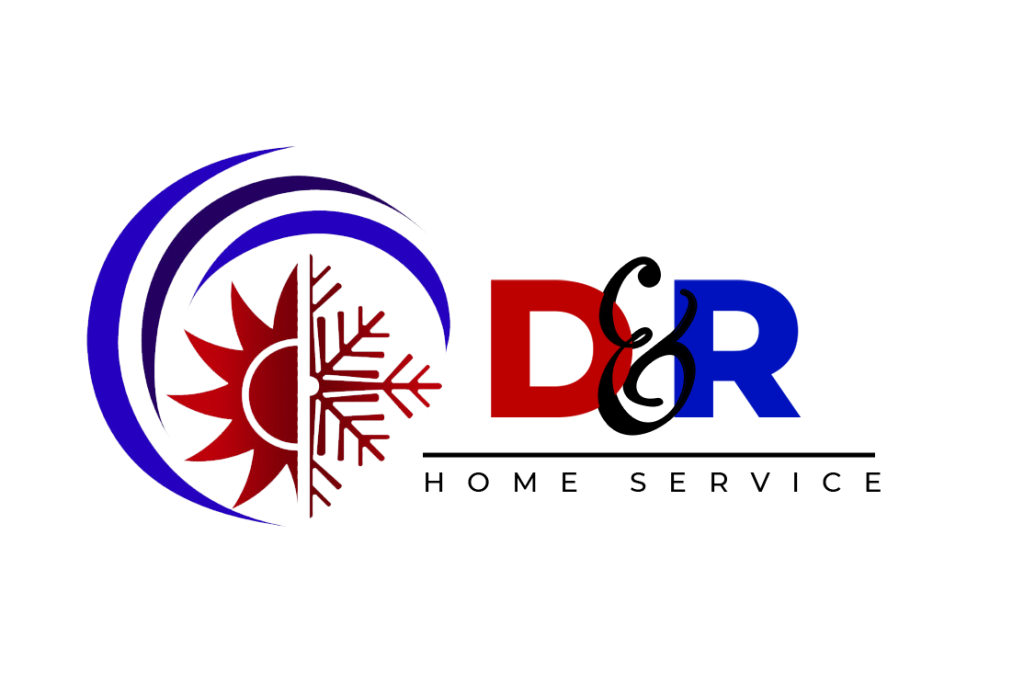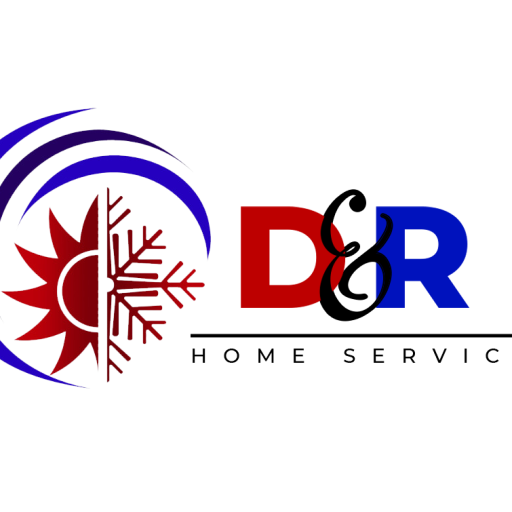- © 2025 D&R HOME SERVICE. All Rights Reserved
Your heating and cooling system is one of the hardest working parts of your home. From frigid winters to blazing summers, it keeps your family comfortable year-round. But like any machine, it needs care. One of the simplest yet most powerful ways to protect your HVAC system components is by lubricating moving parts in HVAC system.
Without proper HVAC system lubrication, motors, bearings, and compressors work harder than they should. This creates friction, accelerates wear, raises your energy bills, and can even lead to sudden breakdowns. In this guide, we’ll walk you through everything you need to know, starting with understanding the primary components of HVAC system, the right safety measures, the best lubricants for HVAC moving parts, and finally, a complete step-by-step lubrication process.
Before starting any HVAC maintenance, it’s important to understand the parts of HVAC system that rely most on lubrication. Core HVAC system parts such as the blower motor, fan bearings, and compressors are at the heart of your heating system and cooling system.
The blower motor ensures efficient airflow, while fan bearings keep blades spinning smoothly. Compressors in your heat pump or air conditioning unit are other components that move refrigerant through the evaporator coils and condenser coils, making heat transfer possible.
But not every component needs lubrication. Air filters don’t, but they remain crucial in preventing dust and debris buildup that can strain lubricated parts. When airflow and ductwork are paired with well-lubricated motors and bearings, you get reliable energy efficiency and long-lasting indoor comfort. This is why seasonal inspections by a skilled HVAC technician are vital for catching issues early and help prolong HVAC lifespan.
Every guide to HVAC maintenance starts with safety. Ignoring HVAC safety precautions can lead to accidents, equipment damage, or even electrical hazards. Follow these HVAC safety measures before beginning:
By taking these steps, you’ll keep yourself safe and ensure your routine checks deliver the best results.
Choosing the right lubricant is key to protecting HVAC components. Different HVAC system parts need specific products:
The best choice depends on your equipment’s design. Our qualified HVAC professionals from D&R Home Service can recommend the best lubricants for HVAC moving parts based on your system’s brand, age, and operating environment.
Here’s how to safely perform HVAC system lubrication:
Before beginning any maintenance, it’s crucial to identify the specific HVAC components that require lubrication. Key parts include the blower motor, fan bearings, compressors, and any moving joints. Consult the manufacturer’s manual since locating all these parts is important for proper maintenance.
Always disconnect power completely before touching any HVAC components. Ensuring the system is off is a fundamental HVAC safety measure that prevents electrical hazards during routine service, protecting both the technician and the equipment.
Start by cleaning air filters and replacing them if needed. Remove dust and debris from accessible HVAC system parts, including fan bearings and vents. This step improves air quality, prevents contamination of lubricants, and supports optimal performance.
Remove protective panels to reach the blower motor, compressors, and fan bearings. Proper access allows the HVAC technician to perform routine checks, reducing wear on moving parts and helping prolong the lifespan of your system.
Use the recommended product for each component, such as non-detergent SAE 20 oil for fan bearings, compressor oil for compressors, and silicone-based lubricants for O-rings and seals. Proper application not only reduces friction but also supports AC maintenance and furnace maintenance.
After lubrication, gently wipe away any excess oil. Over-application can attract dust and create clogs, reducing efficient airflow and increasing utility bills. Proper care ensures HVAC performance is maintained and helps extend HVAC lifespan.
Carefully reattach all covers and panels. Check electrical connections and reset thermostat settings. This invites optimal performance and proper airflow, keeping the HVAC system running efficiently year-round.
Power up the system for a short test cycle. Listen for unusual noises or vibrations, check the condensate drain line for leaks, and verify refrigerant levels. These steps confirm HVAC maintenance success and help save on energy bills.
Lubrication problems show clear symptoms. Call an HVAC specialist if you notice:
You should lubricate HVAC moving parts every six months, ideally during seasonal inspections before summer and winter. Combining lubrication with checking refrigerant levels, evaporator coils, condenser coils, thermostat adjustments, air filters, and duct cleaning helps improve efficiency and ensures smooth airflow.
Regular lubrication as part of your routine service can reduce costs, prevent breakdowns, and extend HVAC system lifespan while maintaining optimal performance and indoor comfort.
Understanding the costs of lubricating moving parts in HVAC systems helps homeowners plan maintenance budgets more effectively. Below is a detailed overview of typical U.S. service pricing for HVAC system lubrication.
| HVAC Component | Typical Lubricant Used | Average Cost |
| Blower Motor | Non-detergent SAE 20 oil | $50 – $100 |
| Fan Bearings | Non-detergent SAE 20 oil, Multi-purpose grease | $40 – $90 |
| Compressor | Compressor oil, Synthetic lubricants | $75 – $150 |
| Condenser Fan Motor | Non-detergent SAE 20 oil, Synthetic lubricants | $60 – $120 |
| Evaporator Fan Motor | Non-detergent SAE 20 oil, Synthetic lubricants | $60 – $120 |
| Heat Pump Motors | Synthetic lubricants, Compressor oil | $80 – $160 |
| Furnace Blower Motor | Non-detergent SAE 20 oil, Multi-purpose grease | $50 – $100 |
| Condensate Drain Line | Silicone-based lubricants | $30 – $60 |
| O-rings and Seals | Silicone-based lubricants | $20 – $50 |
Proper lubrication is more than just a routine task. It ensures reliable HVAC performance, improves air quality, prevents costly repairs, and helps extend HVAC lifespan.
At D&R Home Service, our certified HVAC technicians provide professional HVAC Service, keeping your system running at optimal performance year-round. Contact us today at (443) 868-4022 or visit D&R HOME SERVICE to schedule your next maintenance visit.
What is the purpose of lubricating moving parts of equipment?
By reducing friction forces and the heat that they generate, machinery lubrication can reduce wear and tear, lower the chances of significant component or equipment damage, and yield equipment performance improvements such as increased uptime and less maintenance.
Why is lubricating moving parts in HVAC system important?
Proper HVAC system lubrication reduces friction, prevents wear on HVAC components, improves airflow and ductwork, extends HVAC lifespan, lowers energy bills, and ensures reliable indoor comfort.
What is over-lubrication in HVAC systems and why is it a problem?
Over-lubrication occurs when too much lubricant is applied to HVAC components, which can cause clogs, attract dust and debris, create overheating, and shorten the HVAC system lifespan.
What are the signs that my HVAC parts need lubrication?
Common symptoms include unusual noises, vibrations, overheating, visible wear or rust, and oil leaks from O-rings, seals, or joints.
Can I use any oil for my HVAC system?
No. Always follow the manufacturer’s guidelines for HVAC lubrication. Use the correct products like non-detergent SAE 20 oil, compressor lubricants, or silicone-based lubricants for specific components.

At D&R Home Service, we are committed to delivering top-quality heating & air conditioning services to keep your home comfortable year-round. With upfront pricing, skilled technicians, and a customer-first approach, we make heating and cooling services stress-free. Whether you need AC repairs, furnace installations, or indoor air quality solutions, our team is here to help.
